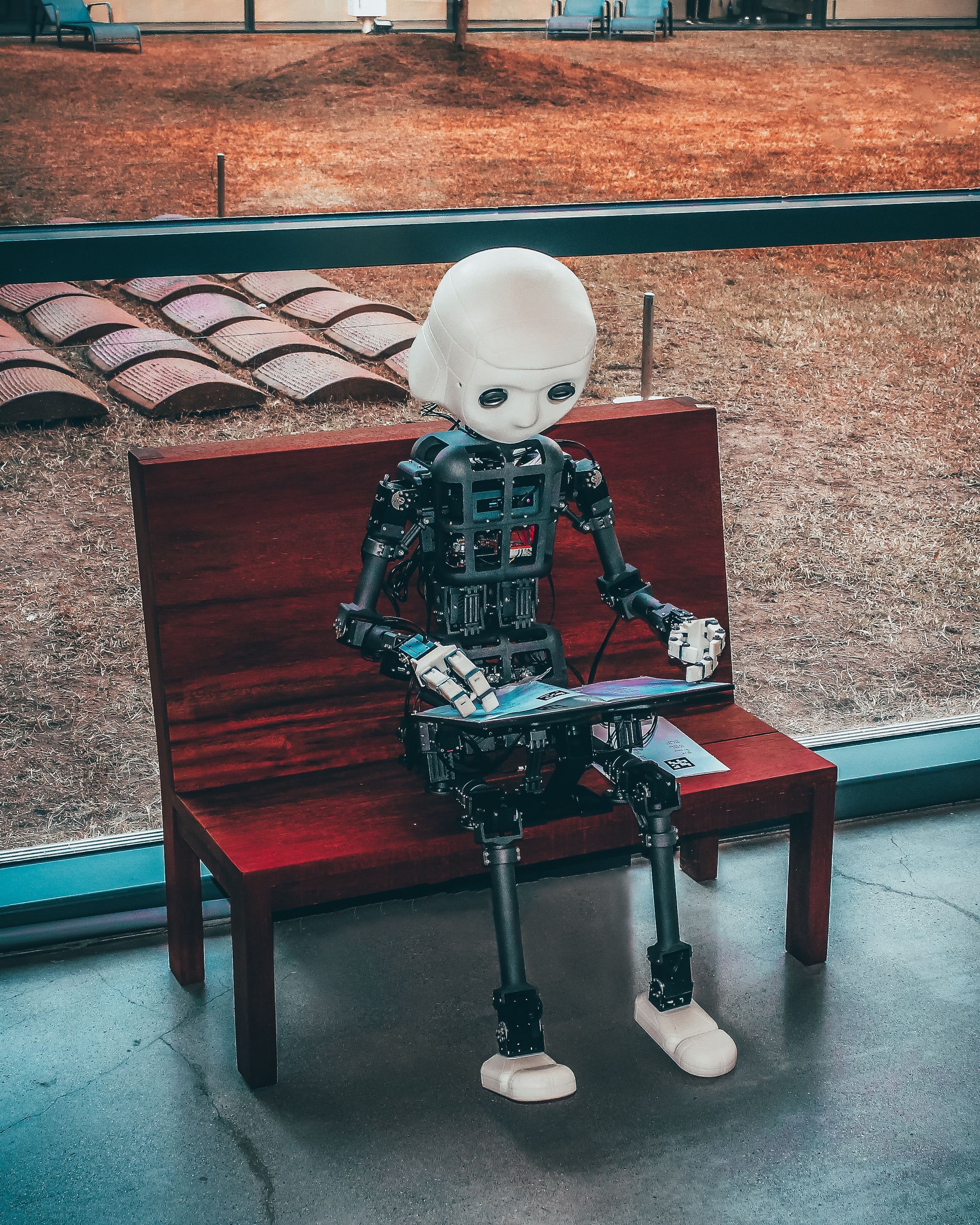Humanoid robots take questions at a Geneva news conference
by AP | ABC 7 Chicago
BERLIN -- A United Nations technology agency assembled a group of robots that physically resembled humans at a news conference Friday, inviting reporters to ask them questions in an event meant to spark discussion about the future of artificial intelligence.
The nine robots were seated and posed upright along with some of the people who helped make them at a podium in a Geneva conference center for what the U.N.'s International Telecommunication Union billed as the world's first news conference featuring humanoid social robots.
Among them: Sophia, the first robot innovation ambassador for the U.N. Development Program, or UNDP; Grace, described as a health care robot; and Desdemona, a rock star robot. Two, Geminoid and Nadine, resembled their makers.
Organizers said the event at the AI for Good Global Summit was meant to showcase the capabilities, but also the limitations, of robotics and how those technologies could help the U.N.'s sustainable development goals. The media event featured introductions from the robots' companions or creators, and a round of questions to the robots from reporters.
Everything To Know About Artificial General Intelligence
by Samarpita Chakraborty | Analytics Insights

Exploring Artificial General Intelligence and the Future of AI
Artificial General Intelligence (AGI) is a term that has gained significant attention in the field of Artificial Intelligence (AI) research. AGI refers to the development of intelligent machines that can understand, learn, and perform any intellectual task that a human being can do. In other words, AGI aims to create machines with human-like intelligence, surpassing the limitations of narrow AI systems designed for specific tasks.
Unlike narrow AI systems programmed to excel at specific tasks such as playing chess or diagnosing diseases, AGI seeks to replicate human intelligence across a wide range of domains and exhibit the same level of adaptability and flexibility humans possess. While narrow AI has already made significant advancements in various fields, AGI represents the next step in the evolution of AI technology.
One key differentiating factor of AGI is its ability to generalize knowledge and skills across different contexts. For example, a narrow AI system designed to play chess may excel at the game but would need help to transfer its knowledge to playing other board games. On the other hand, an AGI system would be capable of learning and excelling at multiple board games by understanding the underlying principles of strategy and gameplay.
Eventbrite: Deploying Generative AI to Help Its Hosts
By Steven Melendez | Innovation Leader

Eventbrite, the San Francisco-based ticketing platform, recently unveiled AI-driven tools to automatically draft event descriptions and copy for marketing campaigns, as well as to create images. Early tests found that event organizers were able to launch ad campaigns 30 percent faster using AI to generate copy. Chief Product Officer Ted Dworkin spoke to InnoLead about Eventbrite’s experience with generative AI, and the company’s philosophy on rolling out new features and empowering engineers to use AI.
We saw the news around the new AI features. Could you walk me through how that came about, and how it’s working under the hood?
Ted Dworkin, Chief Product Officer, Eventbrite
The idea came about because we have a really creative, active, empowered set of developers. They’re really customer-focused. And so we couldn’t help but be really curious and really excited by what was happening in the world of AI. We started playing around with it from the premise of what we can do for customers — what this technology could potentially enable that would make our event creators happier and would make them more successful.
We pretty quickly arrived at a couple of opportunities… Within a matter of weeks, we were able to actually not just model but experiment with, put in front of customers, get data, and realize that there was real benefit there. We put them in production, and now they’re shipping at scale.
🌙 NASA - Best Photo from Last Week
Hubble Checks in on a Galactic Neighbor

The highly irregular galaxy ESO 174-1, which resembles a lonely, hazy cloud against a backdrop of bright stars, dominates this image from the NASA/ESA Hubble Space Telescope. ESO 174-1 lies around 11 million light-years from Earth and consists of a bright cloud of stars and a faint, meandering tendril of dark gas and dust.
This image is part of a collection of Hubble observations designed to better understand our nearby galactic neighbors. The observations aim to resolve the brightest stars and basic properties of every known galaxy within 10 megaparsecs. A parsec is a unit used by astronomers to measure the vast distances to other galaxies – 10 megaparsecs translates to 32 million light-years – and makes astronomical distances easier to handle. For example, the nearest star to the Sun, Proxima Centauri, is about 1.3 parsecs away. In everyday units this is a staggering 25 trillion miles (40 trillion km)!
The program to capture all of our neighboring galaxies was designed to use the 2-3% of Hubble time available between observations. It’s inefficient for Hubble to make back-to-back observations of objects that are in opposite parts of the sky. Observing programs like the one that captured ESO 174-1 fill the gaps between other observations. This way the telescope can move gradually from one observation to another, while still collecting data. These fill-in observing programs make the most out of every last minute of Hubble’s observing time.
Text credit: European Space Agency (ESA)
Image credit: ESA/Hubble & NASA, R. Tully
Media Contact:
Claire Andreoli
NASA's Goddard Space Flight Center, Greenbelt, MD
claire.andreoli@nasa.gov
301-286-1940
Last Updated: Jun 30, 2023
Editor: Andrea Gianopoulos


Disclaimer: None of the content in this newsletter is meant to be financial advice. Please do your own due diligence before taking any action related to content within this article.
Disclaimer: Unbound is reader-supported. When you buy through links on our site, we may earn an affiliate commission.






